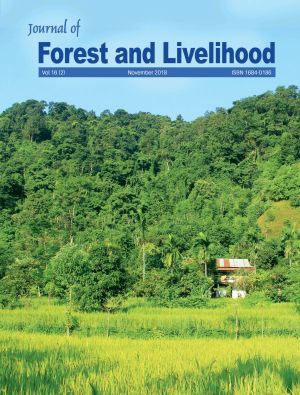Relationship between Climatic Variables and Finger Millet Yield in Syangja, Central Nepal
DOI:
https://doi.org/10.3126/jfl.v16i2.56561Keywords:
Climate change, Detrend, Precipitation, Temperature, YieldAbstract
Temperature and rainfall are important climatic variables on which the yield of crops depends. The increase in temperature and changing pattern of rainfall in an area reliably influence the yield of crops. This paper is based on a study conducted in Syangja district of central Nepal and analyses the climatic variables and yields of finger millet (Eleusine coracana). Changes in the total harvestable area, yearly yield and relationship of climatic variables on yield were analyzed based on correlation and regression analysis of detrended yield and climatic variables for 1980-2016 periods. The total growing season precipitation at different stations of district showed mixed trends of increasing and decreasing. The growing season mean temperature of Chapakot station was not changed but that of Syangja station has increased by 0.009°C/year from 1980-2016. Both maximum and minimum temperature of Syangja station showed increasing rate of 0.026°C but that of Chapakot station showed maximum temperature increased at the rate of 0.017°C and minimum temperature decreased by 0.012°C annually. The result showed that there was a positive and normal relationship between maximum temperature and yield (r=0.298) whereas there were negative relationship with minimum temperature and rainfall. The multi-linear regression model described that 42.8% of finger millet yield is controlled by climatic variables. If the temperature and rainfall continue to rise, the impact is likely to be negative on finger millet production in future. However, overall crop production can be positive with increase in the temperature at relatively higher altitudes provided basic conditions like fertilizers are met.
Downloads
Downloads
Published
How to Cite
Issue
Section
License
Copyright (c) 2018 ForestAction Nepal

This work is licensed under a Creative Commons Attribution-NonCommercial 4.0 International License.
CC-BY-NC: This license allows reusers to distribute, remix, adapt, and build upon the material in any medium or format for noncommercial purposes only, and only so long as attribution is given to the creator.





